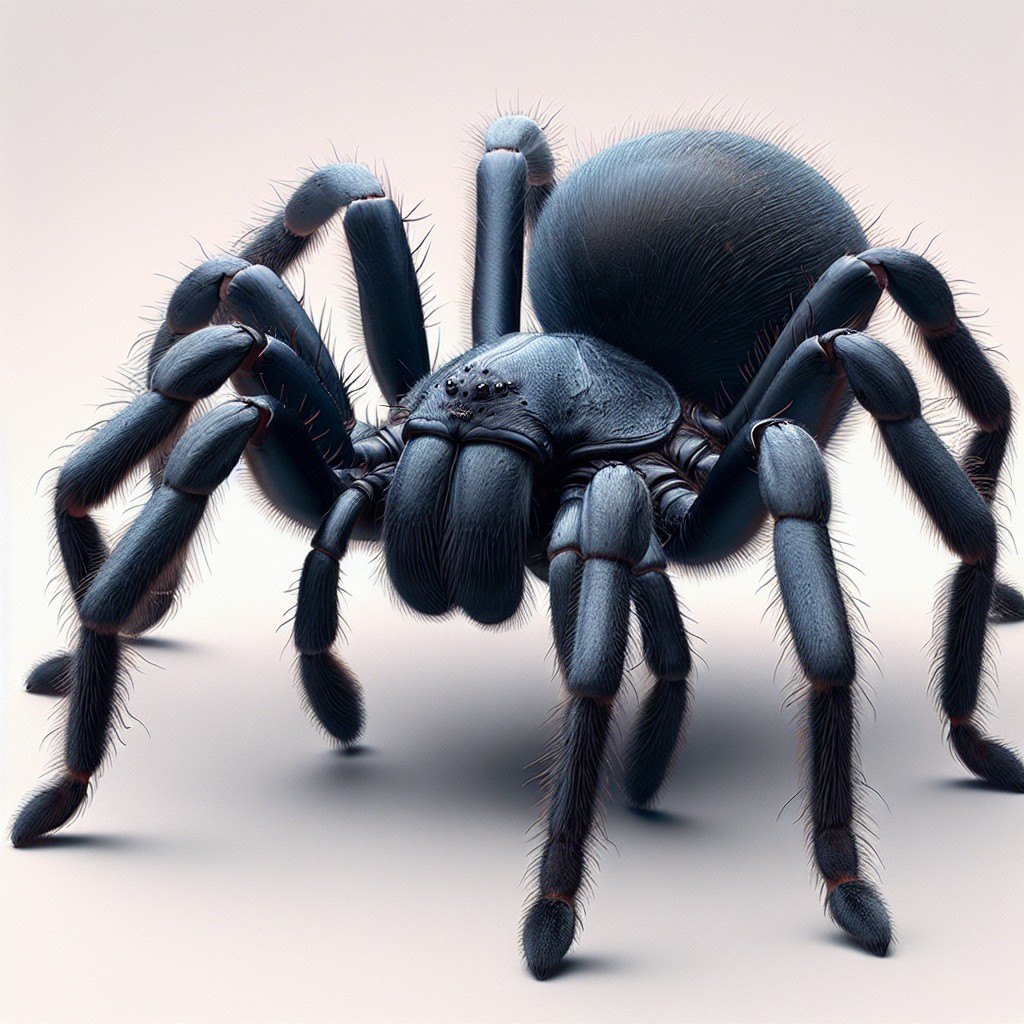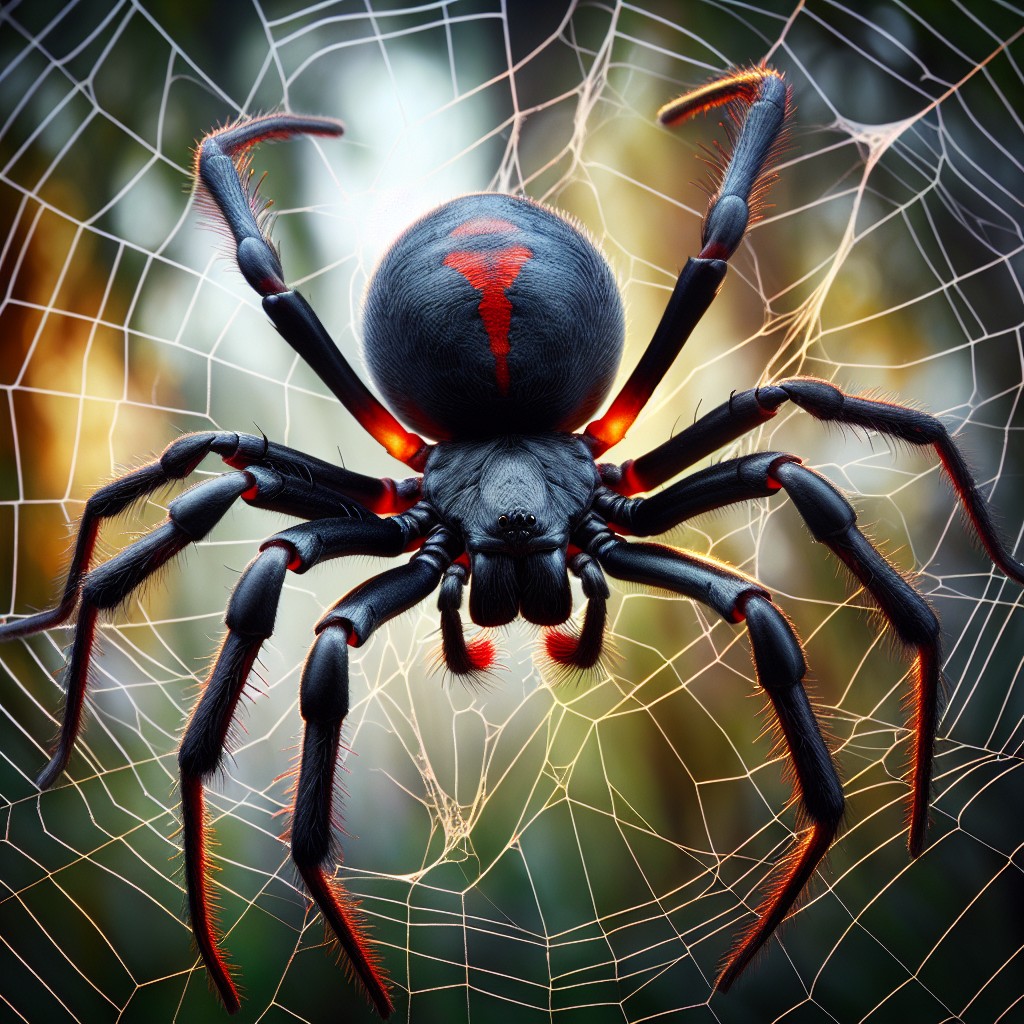The brown recluse spider, scientifically known as Loxosceles reclusa, is a venomous spider that is found primarily in the United States. While it is not aggressive and typically avoids human contact, its bite can be dangerous and potentially life-threatening. In this article, we will explore the characteristics of the brown recluse spider, how to identify its bite, common symptoms, and the importance of seeking immediate medical attention. We will also discuss home treatment options, cleaning and disinfecting the bite area, coping with pain and swelling, potential complications, prevention tips, and what to do if you encounter a brown recluse spider.
Key Takeaways
- Brown recluse spiders are venomous and can be found in certain regions of the United States.
- Identifying a brown recluse spider bite can be difficult, but it typically appears as a red or purple blister with a white or yellow center.
- Common symptoms of a brown recluse spider bite include pain, itching, fever, and nausea.
- Seeking immediate medical attention is crucial if you suspect you have been bitten by a brown recluse spider.
- While there are home remedies for treating a brown recluse spider bite, it is important to consult with a healthcare professional first.
Understanding the Brown Recluse Spider
The brown recluse spider is a small spider that measures about 6 to 20 millimeters in length. It has a characteristic violin-shaped marking on its cephalothorax, which is the part of its body where the legs are attached. This marking gives it the nickname “fiddleback spider.” The color of the spider can vary from light tan to dark brown. It has six eyes arranged in pairs, unlike most spiders that have eight eyes.
Brown recluse spiders are typically found in warm and dry environments such as attics, basements, closets, and woodpiles. They prefer dark and undisturbed areas where they can build their irregular webs. These spiders are most commonly found in the central and southern regions of the United States.
In terms of behavior and feeding habits, brown recluse spiders are nocturnal and tend to be more active during the night. They are not aggressive and will only bite if they feel threatened or trapped. Their diet consists mainly of insects and other small arthropods.
Identifying a Brown Recluse Spider Bite
Identifying a brown recluse spider bite can be challenging as it may not always be immediately noticeable. The bite itself is usually painless, and the symptoms may take several hours or even days to appear. However, there are some key characteristics that can help distinguish a brown recluse spider bite from other insect bites.
One of the most distinctive features of a brown recluse spider bite is the appearance of the bite itself. It often appears as a small, red bump that may resemble a mosquito bite or a pimple. Over time, the bite may develop into a larger lesion with a central blister or ulceration. The surrounding skin may become red and swollen.
It is important to note that not all brown recluse spider bites result in the characteristic “bullseye” appearance. Some bites may only cause mild symptoms or no symptoms at all. Additionally, other insect bites or skin conditions can sometimes mimic the appearance of a brown recluse spider bite. Therefore, it is crucial to consider other factors such as the presence of the spider itself or the geographical location when trying to identify a brown recluse spider bite.
Common Symptoms of a Brown Recluse Spider Bite
| Symptom | Description |
|---|---|
| Redness | The bite area may become red and inflamed. |
| Pain | The bite may cause pain, which can range from mild to severe. |
| Itching | The bite area may itch or tingle. |
| Blisters | Blisters may form at the bite site, which can be filled with fluid. |
| Necrosis | In severe cases, the tissue around the bite may die and turn black. |
| Fever | A fever may develop in some cases. |
| Nausea | Some people may experience nausea or vomiting. |
While the initial bite of a brown recluse spider may go unnoticed, there are several common symptoms that can develop over time. These symptoms can vary in severity depending on the individual’s reaction to the venom and the amount of venom injected.
One of the first symptoms that may occur after a brown recluse spider bite is pain and itching at the site of the bite. This can be mild to moderate and may persist for several days. The pain may worsen with movement or pressure on the affected area.
Redness and swelling are also common symptoms of a brown recluse spider bite. The area around the bite may become inflamed and tender to touch. The redness and swelling can extend beyond the initial site of the bite and may spread over time.
In some cases, a brown recluse spider bite can lead to blistering and necrosis, which is tissue death. This typically occurs within 24 to 72 hours after the bite. The skin around the bite may become dark or purple in color and may eventually develop an open ulcer or a scab. This necrotic tissue can take weeks or even months to heal and may leave a permanent scar.
Seeking Immediate Medical Attention
If you suspect that you have been bitten by a brown recluse spider, it is important to seek immediate medical attention. While not all bites result in severe symptoms, it is better to be safe than sorry, as some individuals may have a more severe reaction to the venom.
In general, it is recommended to go to the emergency room if you experience any of the following symptoms after a brown recluse spider bite:
– Severe pain that does not improve with over-the-counter pain relievers
– Difficulty breathing or swallowing
– Nausea, vomiting, or abdominal pain
– Fever and chills
– Rapid heart rate or dizziness
– Worsening redness, swelling, or blistering around the bite
– Signs of infection such as pus or increasing warmth at the site of the bite
When you arrive at the emergency room, the healthcare provider will assess your symptoms and examine the bite area. They may order additional tests such as blood tests or imaging studies to evaluate the extent of tissue damage. Treatment options may include pain medication, antibiotics to prevent infection, and wound care.
Treating a Brown Recluse Spider Bite at Home
If you have a mild reaction to a brown recluse spider bite and do not require immediate medical attention, there are some first aid measures that you can take at home to help alleviate symptoms and promote healing.
First and foremost, it is important to clean the bite area thoroughly with soap and water. This helps remove any venom or bacteria that may be present on the skin. After cleaning, apply an over-the-counter antibiotic ointment to the bite to prevent infection. Cover the bite with a clean bandage or dressing to protect it from further irritation.
Over-the-counter pain relievers such as acetaminophen or ibuprofen can help alleviate pain and reduce inflammation. Antihistamines such as diphenhydramine can also be taken to relieve itching. It is important to follow the recommended dosage instructions and consult with a healthcare provider if you have any underlying medical conditions or are taking other medications.
It is worth noting that home treatment should only be attempted if you are confident that the bite is from a brown recluse spider and you are not experiencing severe symptoms. If in doubt, it is always best to seek medical attention.
Importance of Cleaning and Disinfecting the Bite Area
Cleaning and disinfecting the bite area is a crucial step in the treatment of a brown recluse spider bite. This helps remove any bacteria or debris that may be present on the skin and reduces the risk of infection.
To properly clean the bite area, start by washing your hands thoroughly with soap and water. Then, gently clean the bite with mild soap and warm water. Avoid scrubbing or rubbing the area, as this can further irritate the skin. Rinse the area well and pat it dry with a clean towel.
After cleaning, it is important to disinfect the bite area to kill any remaining bacteria. You can use an over-the-counter antiseptic solution such as hydrogen peroxide or rubbing alcohol. Apply a small amount of the antiseptic solution to a clean cotton ball or swab and gently dab it onto the bite area. Allow it to air dry before applying any ointments or dressings.
It is important to note that while cleaning and disinfecting the bite area is crucial, it should not replace medical evaluation and treatment. If you are unsure about how to properly clean and disinfect the bite or if you are experiencing severe symptoms, it is best to seek medical attention.
Coping with Pain and Swelling After a Brown Recluse Spider Bite
Pain and swelling are common symptoms after a brown recluse spider bite. While these symptoms can be uncomfortable, there are several measures that you can take to help manage them at home.
Applying a cold compress or ice pack to the bite area can help reduce pain and swelling. Wrap the ice pack in a thin cloth or towel and apply it to the affected area for 10 to 15 minutes at a time. Take breaks in between to prevent frostbite or skin damage.
Elevating the affected limb can also help reduce swelling. If the bite is on your arm or leg, prop it up on pillows or cushions to elevate it above heart level. This helps promote blood flow away from the area and reduces swelling.
Over-the-counter pain relievers such as acetaminophen or ibuprofen can be taken to alleviate pain and reduce inflammation. Follow the recommended dosage instructions and consult with a healthcare provider if you have any underlying medical conditions or are taking other medications.
If the pain and swelling persist or worsen despite home remedies, it is important to seek additional medical attention. This may indicate a more severe reaction to the venom or the presence of an infection.
Potential Complications of a Brown Recluse Spider Bite
While most brown recluse spider bites resolve without complications, there are potential risks associated with these bites that should not be ignored. Prompt medical attention is crucial to prevent and manage these complications.
One of the main complications of a brown recluse spider bite is infection. The open ulcer or blister that develops at the bite site can become infected if proper wound care is not followed. Signs of infection include increasing redness, warmth, swelling, and the presence of pus or drainage from the wound. In severe cases, the infection can spread to other parts of the body and lead to systemic symptoms such as fever, chills, and malaise.
Tissue damage is another potential complication of a brown recluse spider bite. The venom of the spider contains enzymes that can destroy skin tissue and cause necrosis. This can result in a deep ulcer or a large area of dead tissue. In some cases, surgical intervention may be required to remove the necrotic tissue and promote healing.
Systemic reactions and allergic responses are rare but possible complications of a brown recluse spider bite. Some individuals may have an allergic reaction to the venom, which can manifest as hives, difficulty breathing, or swelling of the face, lips, or throat. In severe cases, anaphylaxis can occur, which is a life-threatening allergic reaction that requires immediate medical attention.
Prevention Tips to Avoid Brown Recluse Spider Bites
Preventing brown recluse spider bites is essential to avoid the potential dangers associated with them. Here are some tips to reduce the risk of encountering brown recluse spiders:
1. Keep your home clean and clutter-free: Regularly clean and vacuum your home to remove any potential hiding spots for spiders. Pay special attention to areas such as attics, basements, closets, and storage areas.
2. Seal cracks and crevices: Inspect your home for any cracks or openings that spiders can use to enter. Seal these openings with caulk or weatherstripping to prevent spiders from gaining access.
3. Shake out clothing and shoes: Before putting on any clothing or shoes that have been stored for a while, shake them out to dislodge any spiders or insects that may be hiding inside.
4. Use insect screens: Install screens on windows and doors to prevent spiders from entering your home. Make sure the screens are in good condition and do not have any tears or holes.
5. Store firewood away from the house: If you have a fireplace or wood-burning stove, store firewood at least 20 feet away from your home. This helps prevent spiders from entering your home when you bring in firewood.
6. Use spider repellents: There are various spider repellents available on the market that can help deter spiders from entering your home. Follow the instructions carefully and use them in areas where spiders are commonly found.
7. Wear protective clothing: If you are working in areas where brown recluse spiders may be present, such as attics or basements, wear long sleeves, pants, and gloves to protect yourself from potential bites.
8. Be cautious when handling stored items: When moving or rearranging stored items, be cautious and wear protective gloves. Spiders may be hiding in boxes or behind objects.
9. Educate yourself and others: Learn how to identify brown recluse spiders and educate your family members and friends about their appearance and potential dangers. This can help prevent accidental encounters and bites.
10. Consult with pest control professionals: If you have a persistent problem with brown recluse spiders or other pests, consider consulting with pest control professionals who can assess your home and provide appropriate treatment options.
Staying Safe and Prepared for Brown Recluse Spider Encounters
If you spot a brown recluse spider in your home or outdoor space, it is important to take appropriate measures to protect yourself and your family from potential bites.
First and foremost, do not attempt to handle or capture the spider yourself. Brown recluse spiders are venomous, and attempting to handle them can increase the risk of a bite. Instead, try to keep an eye on the spider’s location and contact a pest control professional for assistance.
If you encounter a brown recluse spider outdoors, it is best to avoid it and give it space. These spiders typically do not seek out human contact and will only bite if they feel threatened or trapped. If you are in an area where brown recluse spiders are known to be present, take precautions such as wearing protective clothing and using insect repellents.
It is also important to educate yourself and your family members about the appearance and behavior of brown recluse spiders. This can help you identify them and take appropriate action if you come across one.
In conclusion, brown recluse spider bites can be dangerous and potentially life-threatening. It is important to understand the characteristics of the brown recluse spider, how to identify its bite, common symptoms, and the importance of seeking immediate medical attention. Home treatment options such as cleaning and disinfecting the bite area, managing pain and swelling, and preventing infection are also crucial. By following prevention tips and staying prepared for brown recluse spider encounters, you can reduce the risk of bites and protect yourself and your family. It is essential to take brown recluse spider bites seriously and seek medical attention when necessary to prevent complications and promote healing.
FAQs
What is a Brown Recluse Spider?
A Brown Recluse Spider is a venomous spider species belonging to the genus Loxosceles. They are also known as fiddleback spiders or violin spiders due to the violin-shaped marking on their cephalothorax.
Where are Brown Recluse Spiders found?
Brown Recluse Spiders are found in the United States, primarily in the Midwest and South. They prefer warm and dry environments and are commonly found in homes, barns, and sheds.
What do Brown Recluse Spiders eat?
Brown Recluse Spiders feed on insects and other spiders. They are known to be nocturnal hunters and will actively search for prey at night.
Are Brown Recluse Spiders dangerous?
Yes, Brown Recluse Spiders are considered dangerous due to their venomous bite. The venom can cause necrosis, or tissue death, at the site of the bite and can lead to serious health complications if left untreated.
What are the symptoms of a Brown Recluse Spider bite?
The symptoms of a Brown Recluse Spider bite include pain, redness, and swelling at the site of the bite. Within a few hours, a blister may form, and the surrounding tissue may become dark and necrotic. Other symptoms may include fever, chills, and body aches.
What should I do if I am bitten by a Brown Recluse Spider?
If you are bitten by a Brown Recluse Spider, seek medical attention immediately. Clean the bite area with soap and water and apply a cold compress to reduce swelling. Do not apply any home remedies or attempt to suck out the venom.
How can I prevent Brown Recluse Spider bites?
To prevent Brown Recluse Spider bites, take measures to keep them out of your home, such as sealing cracks and crevices and keeping clutter to a minimum. Wear protective clothing when working in areas where Brown Recluse Spiders may be present, such as barns or sheds.


